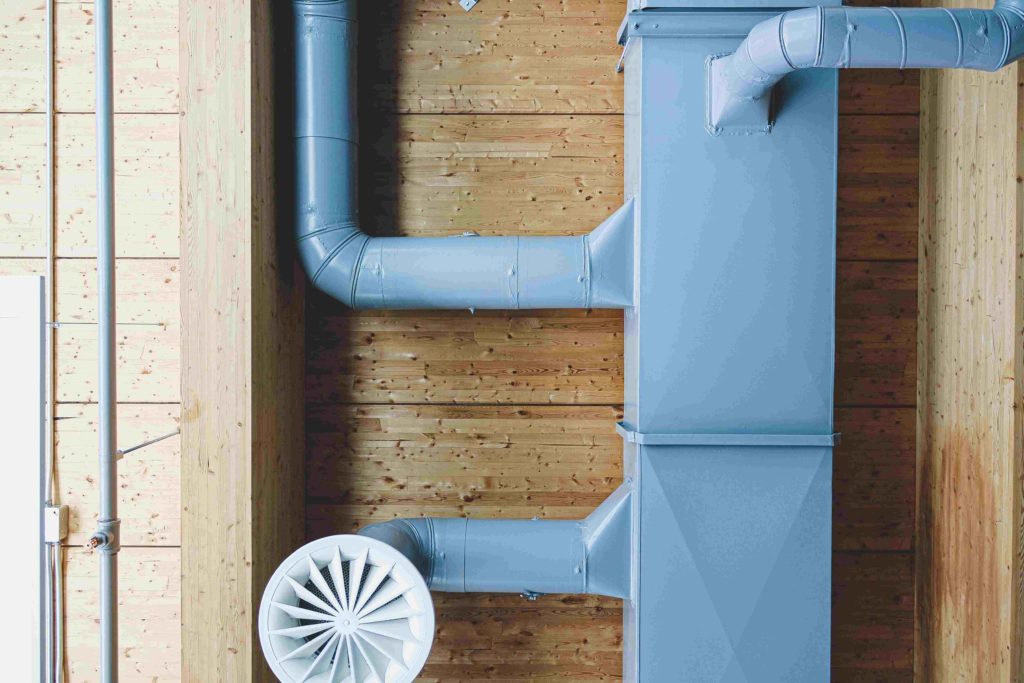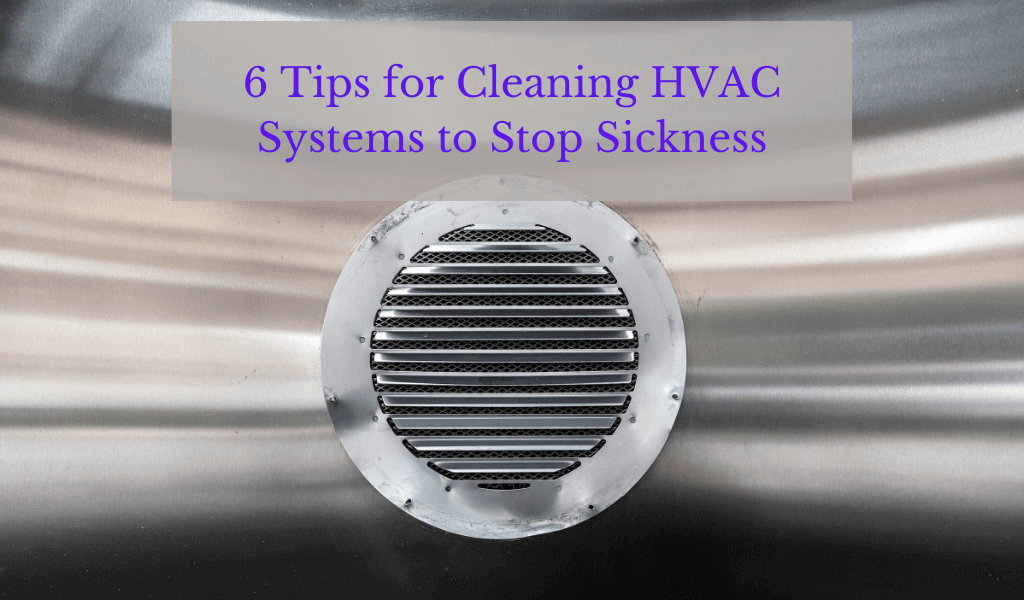There’s more to cleaning HVAC systems than dusting the vents. Find out how to do it right and keep your employees and the public healthy.
You would think that cleaning HVAC systems would be a straightforward matter. We know that poorly maintained heating and cooling systems can cause all sorts of problems. They run less efficiently, they can freeze up, and you’re looking at a major headache if these systems start leaking. What about health, though?
On the surface, it seems like a dirty HVAC system would also spread germs and dust throughout a building, causing problems with allergies and sickness. The Environmental Protection Agency (EPA) even has a name for this: sick building syndrome. This syndrome is associated with coughs, headaches, itchy skin, dizziness, fatigue, and other physical symptoms.
The causes of sick building syndrome (SBS) and building-related illness (BRI) include poor ventilation, indoor sources of chemical contaminants such as cleaning chemicals or pesticides, and biological pollutants such as mold, pollen, and viruses. As far as an HVAC system goes, the EPA specifically states that “inadequate ventilation” can happen if HVAC systems aren’t working properly to “distribute air to people in the building.”
Again, it seems like simply cleaning HVAC systems would be enough to solve this issue. But it’s not quite that clear-cut.
Harness the value of Janitorial Manager to keep your employees and the public safe and healthy. Learn more today with a free discovery call.

Cleaning HVAC systems: The do’s and don’ts of getting it right
One interesting thing about cleaning HVAC systems is that there is little actual evidence that it helps prevent sickness. That might seem at odds with SBS, but if you look closely, many of the potential causes of SBS aren’t directly related to dirty ductwork. The problems arise when the system itself is too small or underpowered for the space. Other issues stem from indoor air pollutants that most often occur outside of the HVAC system.
Maintenance is a separate issue, and the building manager or facilities department should expect that an HVAC system will need maintenance, such as filter changes. Cleaning, though? It’s actually not recommended most of the time, as it can stir up more dust.
There are exceptions, of course, some of which we’ll address below. The point is that, in many cases, stopping the spread of dust, viruses, and other contaminants that may cause sickness isn’t as straightforward as it seems. Here are several considerations to be aware of.
1. Use Environmentally-Friendly Cleaning Products. If you look at that list of potential causes of SBS, you’ll notice that harsh cleaning chemicals are mentioned. So whether you’re cleaning HVAC systems or disinfecting the break room, one way to prevent SBS is to switch to cleaning products that don’t have volatile chemicals in them. Most green cleaning products meet this requirement, but to be sure, look for Design for the Environment (DfE) certification or Green Seal certification to guarantee that the products you use are safe.
2. Check for Asbestos. Many older HVAC systems contain asbestos. If the material is sealed and not friable, it’s generally not a concern. However, if you notice any tears or frayed areas, you’ll need to leave it alone and find someone certified to work with asbestos to take a look at things. You absolutely do not want to release asbestos into a building’s HVAC system.
3. Filters and Intake Vents Should be Dusty. Many people may be concerned that dusty intake vents mean the entire system is filthy, and they need to start cleaning HVAC systems in their buildings more often. That’s not necessarily true. Dirty filters mean the system is doing its job. Obviously, they do need to be cleaned or replaced regularly so the system can continue to function efficiently, but that doesn’t mean all the ductwork is dirty.
4. Take Care of Any Underlying Problems. One of the issues that can occur with HVAC systems and ductwork is leaks that lead to mold growth. If the leak itself isn’t fixed, mold will continue to be a problem. This is especially true if moisture gets into drywall or ceiling tiles. So before you look too intently into cleaning HVAC systems due to sick people in the building, make sure there aren’t other issues that need to be dealth with.
5. Be on the Lookout for Insects or Rodents. Rodent droppings and dead insects can lead to numerous health problems. And while you may be able to clean these, there is still the problem of a potential infestation to contend with. If you notice these issues, be sure to share your concerns with the building manager so they can have an exterminator take care of the problem. Incidentally, this is one of the cases where the EPA does recommend cleaning HVAC systems.
6. There’s More to It Than Filters and Ducts. If you’re cleaning HVAC systems for clients, it’s helpful for them to understand the steps you’re taking to keep them healthy. Be sure to share with them any areas of concern you find with things like drain pans, broken coils, and such.
There are definitely reasons to clean an HVAC system, but before you jump into dusting the interior of ducts, take a few minutes to truly assess the situation. You might find that the problems aren’t inside the ducts at all, but rather, dirty filters, leaks, or other mechanical issues.
If you are ready to take your cleaning organization to the next level, schedule a free call with Janitorial Manager to see how our software can make your janitorial operation more successful and cost-effective.

